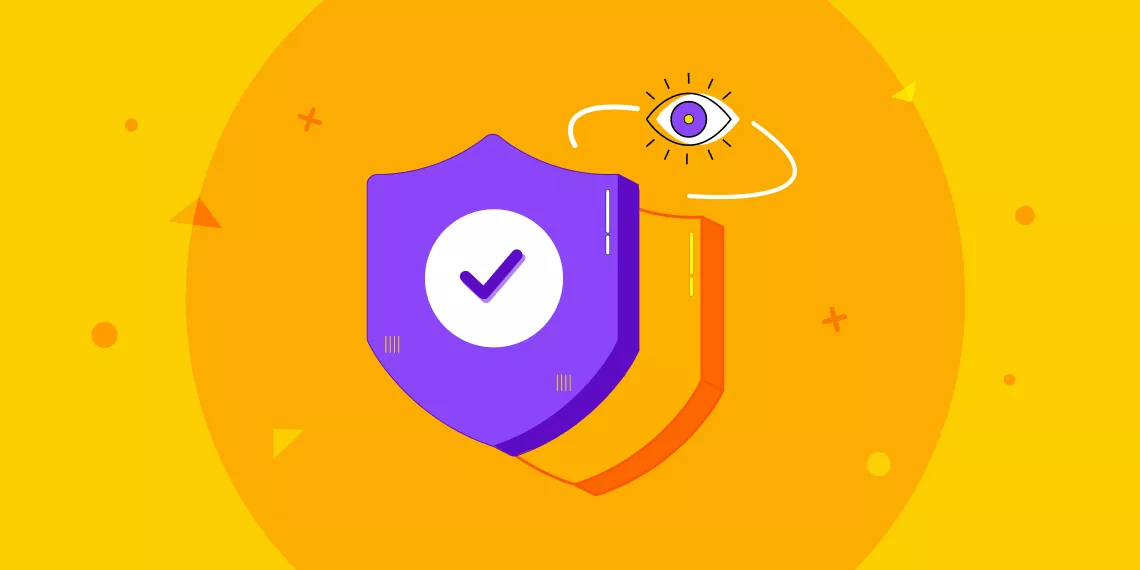
Is it possible to secure your WordPress site 100%?
Unfortunately, WordPress sites aren’t fully secure, out of the box. Websites are always falling victim to cyberattacks. It’s a constant battle between you and brute force attacks or malware. Without security measures in place, you’re at risk of losing everything – data, credibility, or worse, revenue.
So, what does it mean to make your website secure? What steps should you take to protect it? We’ve used our expertise to put together a list of robust security measures. We believe implementing these solutions will bring you close to 100% security for your site.
But, if you’re looking for a quick and simple answer, we recommend installing MalCare. MalCare is the most reliable security plugin on the market. It is comprehensive and takes care of the most important measures on this list. It has a scanner that can identify zero-day malware. It installs a firewall that is constantly updated. It can also take care of other security measures like limiting logins, taking incremental backups, bot protection, and safe backups.
With that in mind, let us discuss the different ways to secure your WordPress site.
Conducting regular malware scans is an essential preventive strategy. Malware poses a serious threat to both the website’s data and customer experience. This malicious code can be injected into your site through vulnerabilities in themes and plugins. Once embedded, malware can lead to a range of issues—from slowing down your site and corrupting data to stealing sensitive information or even taking complete control of the site.
Regular malware scans help in the early detection of such threats. You can use tools like MalCare to automatically scan your website daily and detect backdoors and zero-day malware on your site. MalCare can do it all for free.

Pro tip: We recommend you scan your site at least once a day.
While a scanner looks for malicious actors that have gained access, this next security measure is to proactively block malicious traffic. A Web Application Firewall (WAF) serves as a barrier between your website and the internet. It helps with filtering and monitoring site traffic before it reaches your web server.

It operates based on a set of rules and policies that define what kind of traffic is allowed. A good firewall will keep updating its rules based on new malware. MalCare’s Atomic Security, for example, uses advanced technology to identify zero-day malware and adds new rules to block them.
One of the most popular ways for a hacker to gain access to a site is to exploit a vulnerability in its code. This could be the code of a plugin, theme, or the WordPress core.
An update could be analogous to a car that needs regular maintenance to ensure safety and optimal performance. These updates patch up vulnerabilities, akin to fixing mechanical issues in a car before they lead to breakdowns or, worse, accidents. Skipping maintenance on your car can lead to costly repairs down the line, just as neglecting updates on your WordPress site can expose it to hacks and performance issues, which might become much more troublesome to fix later.
But, it’s not as simple as clicking an update button. As helpful as updates are, they come with their own set of risks. There’s the risk of compatibility issues that can throw a wrench in your site’s functionality. It may even introduce new bugs that weren’t there before. You may even lose custom modifications made to themes or plugins once they are updated.
This is why we recommend that you take a few precautions. For starters, take a backup before you start, You have a plan B if things don’t go as expected. We also recommend reading the update notes before you start; they can tell you about big changes that could impact your site.
Lastly, test all your updates on a staging site first. A staging site is like a copy of your WordPress site and you can make changes to it without affecting your live site. It lets you spot and fix problems without risking your main site. MalCare helps you create a staging site in mere minutes and you can merge the site if all goes well.

Using strong passwords and usernames is a basic but very important security measure. If your password is something simple, like “password” or “1234”, or you use a username like “admin”, it’s like leaving your front door unlocked. Hackers can easily guess these and break into your site.
Hackers often use brute force attacks. It’s a method that involves trying every possible combination of letters, numbers, and symbols until the correct password is discovered. Choosing passwords that mix up big and small letters, numbers, and special symbols, and picking a unique username, is like putting a really good lock on your door—it makes it way harder for hackers to get in.
To add a layer of defense against brute force attacks, you can choose two-factor authentication (2FA).
2FA requires not only the password and username but also something that only the user has on them, such as a mobile device. This means even if a hacker successfully guesses a password, they still cannot gain access without the second form of verification. This is typically a temporary code sent via SMS or generated by an app.
You can use a lot of plugins to integrate 2FA into your login security. It can help you significantly boost the security of your website.
A reliable hosting provider can add a level of security to your server that a security plugin may not be able to help with, like network security and firewalls. Some web hosts will also help with installing an SSL certificate. We will talk more about SSL certificates in a later section. But, in essence, they’re an essential way to protect the content that is transmitted to and from your website. It’s free but requires technical expertise to install.
Limiting login attempts on a website is a critical defense mechanism against brute force attacks.
These attacks involve attackers using automated software to generate and try a vast number of username and password combinations in hopes of guessing the correct credentials. Without restrictions on the number of attempts, attackers could potentially run thousands or even millions of guesses until they succeed, posing a significant threat to website security.
The importance of limiting login attempts lies primarily in its ability to effectively thwart these brute force attacks by automatically blocking the attacker after a certain number of failed login attempts.
The risk with this is that a genuine user may also get locked out if they have forgotten their credentials. MalCare solves this problem by offering a reCAPTCHA puzzle to regain access to the login page. This filters out the good apples from the bad ones.

This security measure acts as an early warning system for site administrators, signaling potential unauthorized access attempts. Following such alerts, further investigations can be conducted, and additional security measures might be implemented to strengthen protections against future attacks.
Make sure that you give a users access to what they need only. For example, if you have bloggers that create content for your site, don’t give them administrator access. Limit their access to the role of a writer or an editor. You can do this by changing the roles on your admin panel.

This is important because even if their credentials are compromised, the hacker doesn’t get a lot of access to your WordPress site.
Form submissions are a critical component of modern websites, enabling everything from user registration and contact inquiries to e-commerce transactions. However, these forms also present significant vulnerabilities if not properly secured, exposing websites to a range of malicious activities.
Unsolicited form submissions, for instance, can lead to spam flooding your inbox, which is not just annoying but can also mask genuinely important communications. More dangerously, automated bots can exploit poorly secured forms to perform SQL injection attacks or distribute malware, putting both the website and its users’ data at risk.
Furthermore, without controls on the number of submissions from the same source, forms can be overwhelmed by spam or malicious traffic, potentially leading to denial of service (DoS) attacks that render the website inoperable.
Droip has a form builder that is designed for easy form security. You can integrate reCAPTCHA, a free service from Google, which can help fight against automated attacks and spam. reCAPTCHA does this by distinguishing between human users and bots, effectively blocking malicious automated software from submitting forms while allowing legitimate users through.

Moreover, Droip helps you limit form entries, which provides an additional layer of control over the website’s interaction with users. By setting a cap on the number of submissions from the same IP address or the total number of responses a form can receive. Droip helps prevent form abuse. This also reduces spam and protects against brute force attacks, where attackers attempt to guess login credentials or find vulnerabilities through repeated form submissions.
Using secure connections is an essential practice for maintaining the security and integrity of your WordPress site. This includes employing HTTPS (HyperText Transfer Protocol Secure) for all transactions and communications between your website and its users. HTTPS ensures that all data transmitted is encrypted, making it much harder for hackers to intercept sensitive information such as login credentials, personal data, and payment information.
Acquiring and installing an SSL (Secure Sockets Layer) certificate is the first step toward enabling HTTPS. This not only secures your site but also boosts your SEO rankings and builds trust with your visitors, as browsers prominently display security warnings for sites not using HTTPS.
Pro tip: Some web hosts help you install SSL certificates. This could be a factor when choosing a host for your site.
Backing up your WordPress site regularly is a critical safeguard against data loss and website downtime. Whether you have lost data due to hacking, human error, or technical malfunctions, having up-to-date backups ensures you can restore your site to its previous state.
There are numerous plugins and tools available that automate the backup process. You need a plugin that helps you schedule daily, weekly, or monthly backups. The backups need to be stored securely in the cloud or a local drive. It’s also wise to test your backups periodically to ensure they can be restored successfully.
You can easily create a backup using MalCare. MalCare helps you schedule backups, automate them, and easily restore them if you need them. It also stores those backups on its own servers, ensuring that your server isn’t slowed down.

WordPress includes a feature that allows administrators to edit PHP files of themes and plugins directly from the dashboard. While this feature offers convenience for quick fixes or changes, it also poses a significant security risk. If hackers gain access to your WordPress dashboard, they could inject malicious code into your site through these editable files.
You can disable file editing via the `wp-config.php` file. But, security plugins like MalCare also help you disable it within their hardening settings.

By default, if your WordPress site’s directories are not properly indexed, browsers can list all files contained within them. This directory browsing feature can expose sensitive site structure and files to hackers, giving them insight into potential vulnerabilities. The easiest way to do so is by setting the index of directories to No indexing. This can be done in the cPanel of your website.

Monitoring user activity on your WordPress site can help you detect unauthorized actions, discern possible security breaches, and understand user behavior. This includes tracking login attempts, file modifications, and changes made to content or settings. Numerous security plugins like MalCare offer user activity logs. They alert admins to suspicious activities that could indicate a compromise.

Spam comments are a common nuisance for many WordPress site administrators, often flooding the comments section with irrelevant, promotional, or malicious content. These comments can range from harmless but annoying advertisements to dangerous links that lead to malware-infested sites or phishing schemes. The presence of spam comments not only degrades the quality of your site’s content and user discussions but can also negatively impact your site’s SEO performance and user trust.
Addressing spam comments effectively requires a multifaceted approach. One crucial tool within WordPress’s arsenal is the use of anti-spam plugins. They automatically filter out suspected spam comments based on certain indicators such as the frequency of posts, the presence of specific keywords, or the origin of the comments. These plugins save administrators a significant amount of time and effort that would otherwise be spent manually sifting through comments.
Another powerful feature is the setting that requires administrator approval for comments. This measure ensures that no comment goes live without being vetted, providing an additional layer of scrutiny. Although this approach is effective, it can be labor-intensive for sites with high volumes of legitimate user engagement.
With Droip you can stop bots from spamming your comment forms. Another example is Akismet, a plugin developed by Automattic, the company behind WordPress, which offers one of the popular solutions to the spam comment problem. By leveraging a global database of known spam signatures and user feedback, Akismet can automatically filter out the bulk of spam comments, significantly reducing the manual workload for site administrators. Users can also add their spam filters and rules to further customize protection levels.
While spam comments are an unavoidable aspect of running a popular WordPress site, the platform provides robust tools and plugins to minimize their impact. Implementing these solutions not only preserves the integrity and usability of your comments section but also protects your site from potential security threats hidden within spam messages. Prioritizing the management of spam comments is essential for maintaining a healthy, engaging, and secure online presence.
WordPress salts, which are also referred to as security keys, play a crucial role in strengthening the security of your WordPress site. These salts are essentially a set of random variables that are used to encrypt information stored in the cookies of user browsers. When you log into your WordPress site, the system generates a cookie containing your authentication details. Salts ensure that the information within these cookies is encrypted, making it significantly more difficult for unauthorized users to decipher and potentially steal your login credentials. These need to be updated after a hack to keep your site secure.
Unfortunately, there is no single solution to securing your WordPress site. You need a combination of tools like a security plugin and a spam plugin to have your entire covered. But, MalCare is the closest thing to a magic wand that you have. It takes care of all the most effective security measures, like installing a firewall and scanning your site constantly.
Additionally, MalCare provides real-time alerts for any suspicious activity, allowing you to take immediate action to safeguard your website. With its user-friendly interface and comprehensive protection, MalCare offers peace of mind for WordPress site owners seeking robust security solutions.

